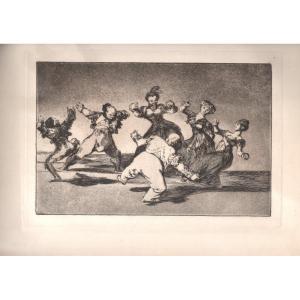- withslight creases in the left margin, otherwise in very good condition
-Expressionistic Tektonic -
GeorgTappert takes a biblical theme and transforms it into an expressionisticpictorial language, modifying it in the process. The eruptive, dynamicstructures become a fixed "landscape of people" that forms theculmination of the landscape in which the good shepherd fits like a tree amongtrees.
About theartist
Afterstudying at the Karlsruhe Art Academy from 1900 to 1903 and an interlude at theBurg Saaleck Art School, Georg Tappert returned to Berlin in 1905, where hisworks were exhibited by Paul Cassirer. From 1906 to 1908, Tappert lived in theWorpswede artists' colony and ran an art school there. His most importantstudent was Wilhelm Morgner, who died during World War I and whose estateTappert later worked on. In Worpswede he met Paula Modersohn-Becker, whose artinspired him. When Tappert returned to Berlin in 1910, his works were rejectedby the Berlin Secession, and he and Max Pechstein founded the New Secession,which lasted until 1914 and included Franz Marc and Wassily Kandinsky, bringingtogether artists from the Brücke and the Blaue Reiter. In 1911, together withKäthe Kollwitz, he founded the "Juryfreie" exhibition in Berlin, andin 1918 he co-founded the "Novembergruppe" and the "Arbeitsratfür Kunst". In 1921 he was appointed professor at the Königliche Kunstschule.The Nazis removed him from his post in 1937 and in the same year removed manyof his works from museums as 'degenerate'. Tappert withdrew into inneremigration, painting mainly landscapes. After the war, he devoted himself torebuilding the Kunstgewerbeschule, which he merged with the Kunstgewerbeschuleunder Karl Hofer.
































 Le Magazine de PROANTIC
Le Magazine de PROANTIC TRÉSORS Magazine
TRÉSORS Magazine Rivista Artiquariato
Rivista Artiquariato